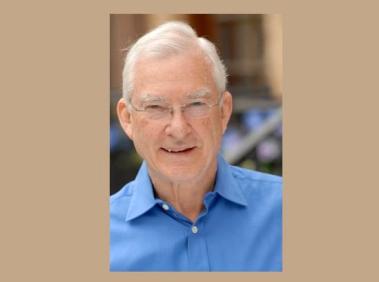Newspapers and Magazines Have to Figure Out Conceptual Graphic Modeling - Charlie Warner

Last year, The New York Times introduced a feature called Times Cast that was about a six- minute video look at the top stories of the day. It began with video from the noon front-page meeting in which the top stories of the day were pitched for the front page. It was "news as process."
If my memory serves me, the concept of "news as process" was developed by the Willis-Duff-lead news consultant AR&D. AR&D in its heyday in the 1980s and 1990s was the second-largest news consultancy group behind Frank Magid & Associates. AR&D's largest client was the ratings-challenged CBS Television Station Group (CBS owned television stations in large markets such as New York, Los Angeles, Chicago, and St. Louis).
Magid- and AR&D-consulted TV stations' news programs had epic battles of perfectly coiffed anchors, glitzy news sets, and slogan-led promotions that featured "the News 4 Local Team" or "Eye Witness News" (if it bleeds, it leads). What really mattered from a differentiation perspective was the rapport between two diverse anchors (avuncular white male and perky black female, e.g.), the color combination of the set and the promotion spots (always blue, red, and white with some mix of emphasis), active-voice writing, a jocular weatherperson, a sports jock who was an enthusiastic homer, live shots, and news you could use. Externals mattered, quality journalism or insightful analysis didn't. Come on, it was television.
One of the externals AR&D came up with was "news as process." The consultancy recommended it to the CBS O&Os, most of which had an open newsroom in which you could see people working in the background—presumably staying on top of the news.
AR&R consulted WOR-TV (channel 9) in New York used the ultimate "news as process" gimmick at one time in its 10:00 pm newscast, which was up against powerful programming on network affiliates. So it had to do something gimmicky to gain attention, and the opening of the news program showed an edited and taped version of its rundown meeting in which the anchors, the producer, and news management discussed the stories that were airing that evening.
AR&D's research showed that viewers were fascinated with the process of making the news sausage they saw delivered by smiling news readers such as the handsome Roland Smith. But not that fascinated; WOR-TV never ascended in the ratings -- a nice way of saying that virtually no one watched.
The New York Times tried the "news as process" approach more than 20 years later in its TimesCast videos with similar results. The "news as process" part had a relatively short life. Today, The Times does not show the front page meeting and does not have editors talking to reporters about an important story. Instead, The Times refers to its videos as just plain "Video," often seen in two places on the front page – at the top of the middle column and in a section labeled, guess what "Video."
The videos are OK, but are nothing special – often packages done by Times reporters who demonstrate why they are writers and not TV personalities. It's evident The Times' video strategy is evolving.
So what is The Times going to do to improve its video offering to satisfy TV news video packages of car chases, wars, tsunamis, earthquakes, and floods? Talking heads, no matter how smart or knowledgeable, are not action, not exciting, not good TV or video.
What The New York Times, the Washington Post, the Wall Street Journal, The Atlantic, the New Yorker, and The Economist need is some type of dynamic software platform, such as the one developed by Hans Rosling and his colleagues at the Karolinska Institute, in Sweden. You can see Rosling use this software in one of several TED Talks at http://www.ted.com/speakers/hans_rosling.html. Or you can see more spectacular uses of the software at the website Gapminder.org.
I think what Rosling and Gapminder do could be called conceptual modeling. They take an idea, a concept that has lots of data associated with it and explain it with a dynamic graphic representation. What journalistic newspapers and magazines do today to compete with the action and excitement of breaking events is to provide in-depth analysis and understanding of news – they deal in ideas and concepts more than action-packed events.
The problem that newspapers and magazines face is how to do a video of an idea, of a concept, of an analysis. They need to make concepts visual, moving, dynamic, colorful. They need to find a way to make the concepts and ideas they present as compelling on video as Hans Rosling does in this TED Talk about when China and India will catch up to America in income per person and life expectancy. http://www.ted.com/talks/hans_rosling_asia_s_rise_how_and_when.html
The TED Talk has a sponsor for the Hans Rosling video and there are sponsors waiting for conceptual graphic modeling videos from major newspapers and magazines.
Until he retired in 2002, Charlie Warner was Vice President of AOL's Interactive Marketing division. Before joining AOL, he was the Goldenson Endowed Professor at the Missouri Journalism School where he taught media management and sales, and he created and ran the annual Management Seminar for News Executives. Charlie can be contacted at charleshwarner@gmail.com.
Read all Charlie’s MediaBizBloggers commentaries at The Media Curmudgeon.
Check us out on Facebook at MediaBizBloggers.com
Follow our Twitter updates @MediaBizBlogger
MediaBizBloggers is an open-thought leadership blog platform for media, marketing and advertising professionals, companies and organizations. To contribute, contact Jack@mediadvisorygroup.com. The opinions expressed in MediaBizBloggers.com are not those of Media Advisory Group, its employees or other MediaBizBloggers.com contributors. Media Advisory Group accepts no responsibility for the views of MediaBizBloggers authors.

